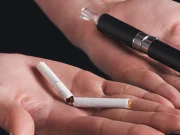In the US, following the passing of a 2022 law giving the FDA control over all nicotine products, the agency restricted synthetic nicotine products, requiring them to have warning labels and be marketed as “modified risk.” Companies must submit an application to the FDA to get permission to sell these products.
In contrast, Costa Rican authorities have just announced a ban on products containing synthetic nicotine, mainly targeting substances used in vapes. The ban includes the sale, use, commercialization, advertising, promotion, and sponsorship of vaping liquids containing synthetic nicotine and cannabinoids, citing health risks. This measure will remain in place while the government prepares a reform of relevant legislation.
The Ministry of Health alleged that since 2021, over 3,000 people have been treated for vaping-related issues in public health centers, with 40% of cases occurring in 2024. The National Anti-Tobacco Network (Renata) supports the decision, expressing concerns about a potential vaping epidemic. While consumers who use vapes as a safer alternative to tobacco, are rightfully concerned about not having access to the products.
South Korea set to regulate synthetic nicotine as tobacco
Taking a different approach, the South Korean government plans to regulate synthetic nicotine as tobacco, according to Yonhap News Agency. The Ministry of Health and Welfare and the Ministry of Economy and Finance are seeking to amend the Tobacco Business Act to include synthetic nicotine within its definition of tobacco, which is fundamentally wrong amongst other things, given that synthetic nicotine is not derived from tobacco.
Currently, South Korea’s regulations on tobacco, governed by both the National Health Promotion Act and the Tobacco Business Act, only apply to products made from tobacco leaves. This excludes e-cigarette liquids made from synthetic nicotine, which are therefore not subject to health warning labels, age restrictions, or tobacco taxes.
The move to revise the legislation is allegedly prompted by BAT’s consideration of launching a synthetic nicotine product in South Korea, which is the only country where the tobacco company is exploring this option. An official from the health ministry indicated that the proposed revision would be presented when the 22nd National Assembly convenes, supported by ample evidence that synthetic nicotine should be classified as tobacco.
The importance of regulations which are relative to risk
Meanwhile, tobacco harm reduction experts have consistently advocated for a differentiated approach to policymaking that recognizes the varying risks associated with different tobacco and nicotine products. Naturally combustible tobacco, such as cigarettes, poses the highest health risks due to the harmful chemicals produced during burning. These products are the leading cause of tobacco-related diseases, including lung cancer, heart disease, and respiratory illnesses.
In contrast, smokeless tobacco products, such as chewing tobacco and snus, while not without risks, do not involve combustion and therefore expose users to fewer harmful chemicals. Studies have indicated that these products are significantly less harmful than smoking. Hence, experts argue that regulatory policies should reflect this reduced risk by providing smokers with accurate information and access to these alternatives as a less harmful option.
Finally, nicotine products, such as vapes and nicotine pouches, are considered the least harmful within this category of products. Vaping delivers nicotine without the combustion process, thereby drastically reducing exposure to harmful substances. Experts contend that these products can play a crucial role in smoking cessation strategies and should be promoted as a safer alternative for smokers who cannot quit nicotine entirely.
Policymakers are urged to adopt a tiered regulatory framework that imposes the strictest controls on combustible tobacco, and sensible risk-relative regulations on smokeless tobacco, and nicotine products, facilitating harm reduction and promoting public health.












